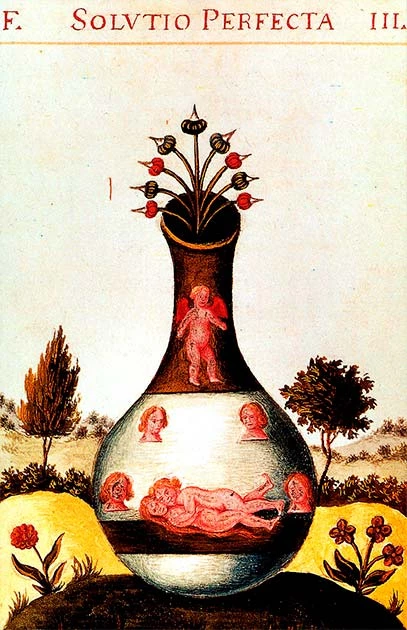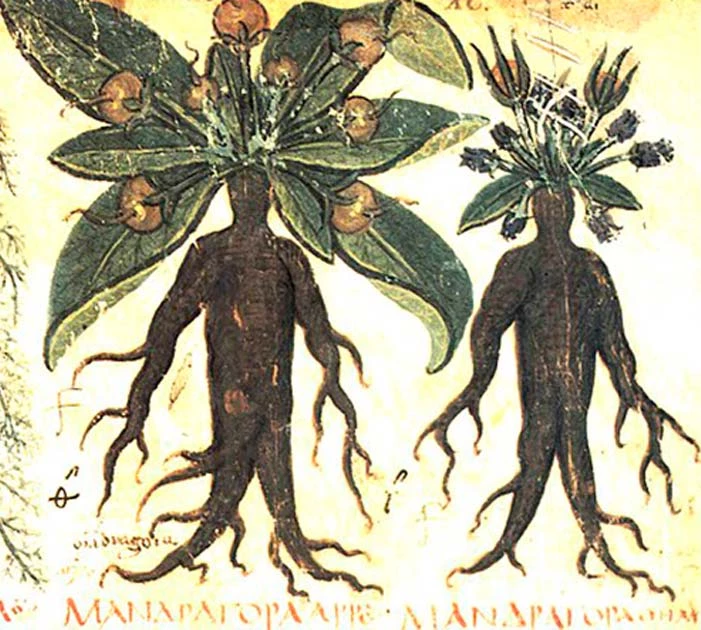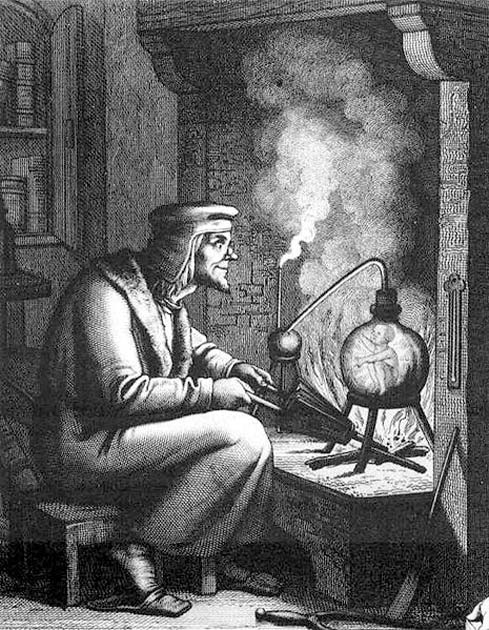If you have taken brain and behavioral studies or psychology coursework, you might be familiar with the “cortical homunculus.” These illustrations depicting strangely distorted renderings of the human body were developed based on the “neurological map of the areas and portions of the human brain dedicated to processing sensory (sensory homunculus) and motor functions (motor homunculus) for different parts of the body.”
The distortions are deliberate and based on how much of the brain’s cerebral cortex is devoted to its function and operation, the idea being to depict the human body in terms of its importance. But the idea of a homunculus didn’t stem from a weird visual memory device to help students remember brain functions; the homunculus dates back to 16th-century alchemy.
Homunculus Among Us
Homunculus translates to “little person” in Latin, and historically, they were representations of tiny humans first depicted as small clay statues. Homunculi and the creation of a miniature yet fully formed human can be traced back to the concept of preformationism.
Preformationism (also known as preformism) is a former historical theory that all organisms develop from miniature versions of themselves. Preformationists believed that “the form of living things exist before their development” and that each generation grows from tiny humans or animals (homunculi or animalcules) that have been around since the beginning of creation.

The opposite of preformationism is epigenesis, which is the idea that each organism is gradually produced “from an undifferentiated mass by a new series of steps and stages during which new parts are added.” Epigenesis can be simplified down to the idea of mitosis and cell division that we associate with how babies are developed.
At the same time, preformationism is the idea that in each sperm, there is a tiny, fully-formed human. And this would be the homunculus.
- Judaism and the Golem: Loyal Protector or Terrible Monster?
- Brownies of Scotland: The Mischievous Household Spirits
There is much debate about when the concept of the homunculus first came into being, but many historians cite its use to Paracelsus and his De Natura Rerum, published in 1537. In the work, Paracelsus describes his process for creating a homunculi as follows:
“That the sperm of a man be putrefied by itself in a sealed cucurbit [a glass container] for forty days with the highest degree of putrefaction in venter equinus [this meant warm, fermenting horse poop, because why not at this point], or at least so long that it comes to life and moves itself, and stirs, which is easily observable. After this time, it will look somewhat like a man, but transparent, without a body. If, after this, it be fed wisely with the Arcanum of human blood, and be nourished for up to forty weeks, and be kept in the even heat of a horse’s womb, a living human child grows therefrom, with all its members like another child, which is born of a woman, but much smaller. This we call a homunculus; and it should be afterwards educated with the greatest care and zeal, until it grows up and begins to display intelligence.”
Another recipe for creating a homunculus comes from Islamic alchemy and the goal to develop a takwin, or an artificially created living being/creature. All one needed to do was obtain a vessel that was shaped like an animal that was desired to be made and “combine the animal’s bodily fluids within it, then place the vessel at the center of a model of a celestial sphere as heat is applied to it.”
Folkloric Traditions
The homunculus is often compared to the idea of a golem from Jewish folklore. A golem is an animated anthropomorphic being that was created from clay or mud. The Jewish golem is a being of protection, strength, hope, and more.
One of the most well-known stories of the golem is The Golem of Prague and Judah Lowe ben Bezalel from the 16th century. The homunculus may have also been inspired by the German folk tradition of the mandragora (mandrake). Author Jean-Baptiste Pitois compares the creation of a mandragora to that of a homunculus. He wrote:
“Would you like to make a Mandragora, as powerful as the homunculus so praised by Paracelsus? Then find a root of the plant called bryony. Take it out of the ground on a Monday (the day of the Moon), a little time after the vernal equinox. Cut off the ends of the root and bury it at night in some country churchyard in a dead man’s grave. For 30 days, water it with cow’s milk in which three bats have been drowned. When the 31st day arrives, take out the root in the middle of the night and dry it in an oven heated with branches of verbena; then wrap it in a piece of a dead man’s winding-sheet [burial shroud] and carry it with you everywhere.”

Alchemists believed that a homunculus was capable of being useful in many different ways. Some abilities attributed to these homunculi included things like being able to control the Moon and make a full Moon appear on the last day of the month, it can allow a person to walk on water, and let a person shapeshift into a cow, sheep, or large ape.
The homunculus can grant its creator the ability to know things that are occurring far away, see and communicate with spirits and demons, summon rain during non-rainy seasons, and even produce “extremely poisonous snakes.” A fully grown homunculus (a very tiny adult human) was also rumored to be a skillful artist who was able to create dwarves, giants, and “other marvels.”
Depending on the culture, text, and author whose work you read, a homunculus was capable of magic or could be created to act as a servant in some cases. Some homunculi were simply bonded slaves to assist the alchemist, with no magical properties at all.
Good or Evil?
The homunculus was seen as a powerful but somewhat limited creation. In some works, the homunculus could only thrive within a glass vessel and needed to be fed a specific type of blood only alchemists could obtain.

If removed from the vessel, the homunculus could live but only for a short period of time. While they were believed to be able to do various things, the homunculus does not appear to be used as a weapon, a way to kill/cause suffering or do much else besides protect or act as a servant.
The homunculus itself was neither good nor evil, but the creator of this little person who controlled it was the one capable of good or evil. Such creatures could be counted on only to follow the will of their master.
Top Image: The method may be unsanitary and of dubious provenance, but medieval alchemists had clear instructions for how to create a homunculus. Source: gar_yl / Adobe Stock.